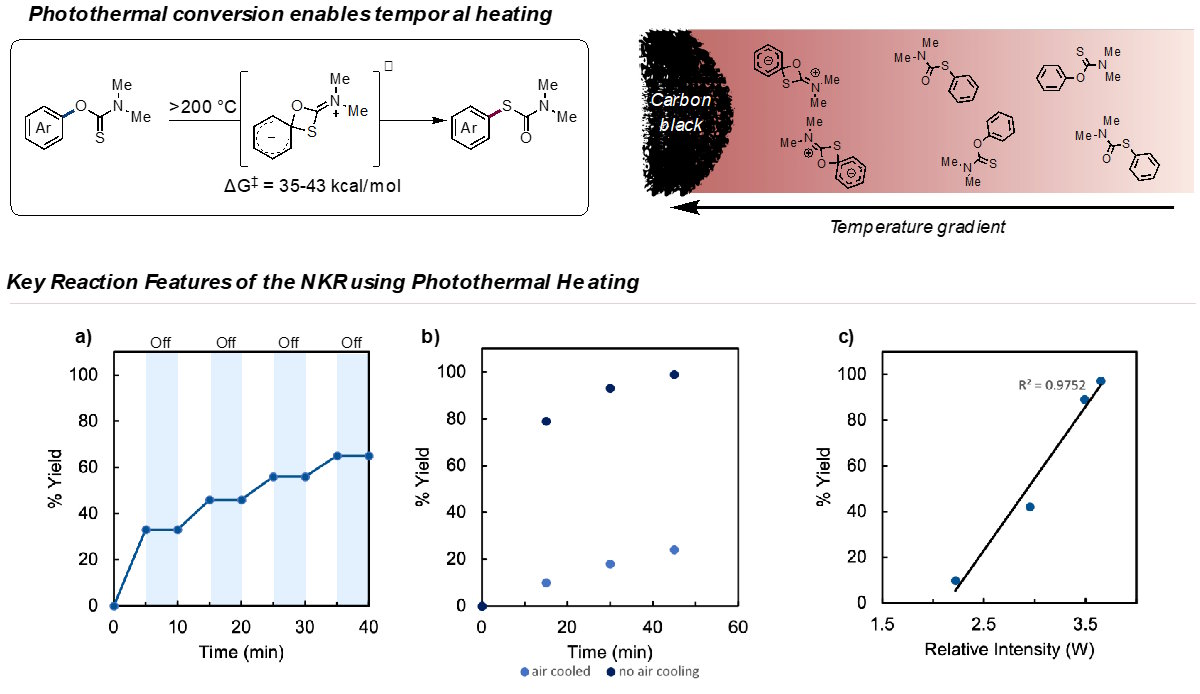The photothermal effect, in short, is a photon-promoted reactivity pathway unique to certain nanomaterials wherein, upon irradiation and excitation, the energy acquired is given off in a non-radiative pathway which generates extreme heat gradients. A staple in the biomedical and inorganic materials fields, the photothermal effect has seen little use within the field of organic synthesis. The Stache Lab envisions that this photon promoted pathway could be leveraged for a wide array of diverse and difficult organic transformations – combining the benefits of photocatalysis with the ubiquity of thermally mediated transformations.

a) Air-cooled (<145 °C bulk temperatures measured) vs. no air-cooling (<210 °C bulk temperature measured).
b) Correlation of light intensity with product yield.
c) On-off experiments.
Our lab demonstrated that the photothermal effect could enact a highly efficient and schematically simple Newman Kwart Rearrangement, an intramolecular SnAr reaction which suffers from prohibitively high activation energy barriers (35-43 kcal/mol). Utilizing inexpensive and robust photothermal agents, such as carbon black (essentially soot) and broad-spectrum white light, Stache and coworkers were able to achieve high yielding Newman Kwart Rearrangements in facile time frames (1- 40 minutes). They were also able to demonstrate a highly diverse substrate scope, promoting the rearrangements of several substrates which were previously unable to be rearranged via conventional heating methods.
Mechanistic insights into photothermal reactivity revealed that temporal control of the reaction was possible, as well as a distinct correlation between light intensity and overall reaction efficiency. The differences in reactivity generated via nanoscale heating and conventional bulk heating are of keen interest to the Stache Lab, who are currently exploring a diverse array of transformations to assess the utility and limitations inherent to photothermal heating. The use of inexpensive, tunable, and sustainable carbon-based photothermal agents to promote reactions which otherwise require high energy input in the form of pyrolysis or specialty, designer catalysts is a recurrent goal for the Stache Lab, whose overarching goals remain sustainability, utility, and intellectual fulfillment.
